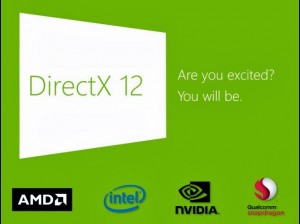DirectX 12 is designed to improve performance scaling for modern hardware, and reduce processing overhead by allowing software developers to access more hardware features than before. Other significant improvements include a reduction in CPU usage of up to 50 percent, and better distribution of work between CPU cores. Microsoft has reaffirmed support for Direct3D across all its platforms: Windows, Xbox, Windows Phone and even Windows RT. The most significant improvement is its ability to address different hardware architectures while offering developers a standardized platform with minimal translation overheads. Specific improvements include performance gains in transparency effects, collision detection, and geometry overlap detection. Microsoft listed AMD, Intel, Nvidia and Qualcomm as major supporting partners at its GDC panel, titled DirectX: Evolving Microsoft’s Graphics Platform. DirectX 12 will be supported on current DirectX 11 hardware, which Microsoft says accounts for up to 80 percent of gaming PCs shipping today. Windows 8 and 8.1 are supported with DX12, but Microsoft declined to comment on support for Windows 7. The Xbox One will also be able to take advantage of various improvements related to performance and power consumption. DirectX 12 is currently in an alpha state, and Microsoft is targeting a winter 2015 release, to line up with games released in the busy holiday season.
